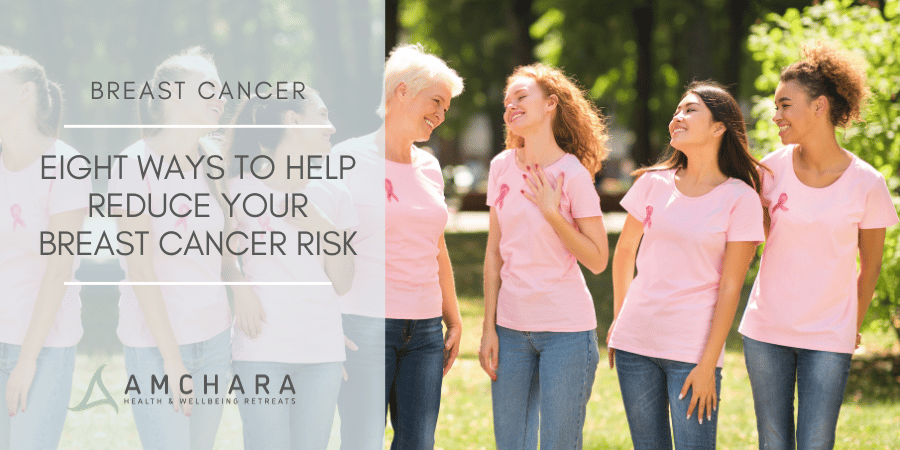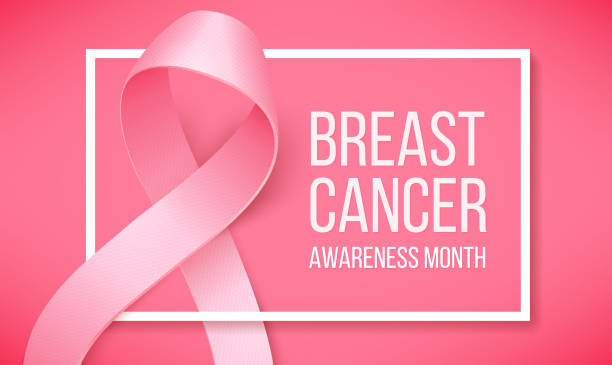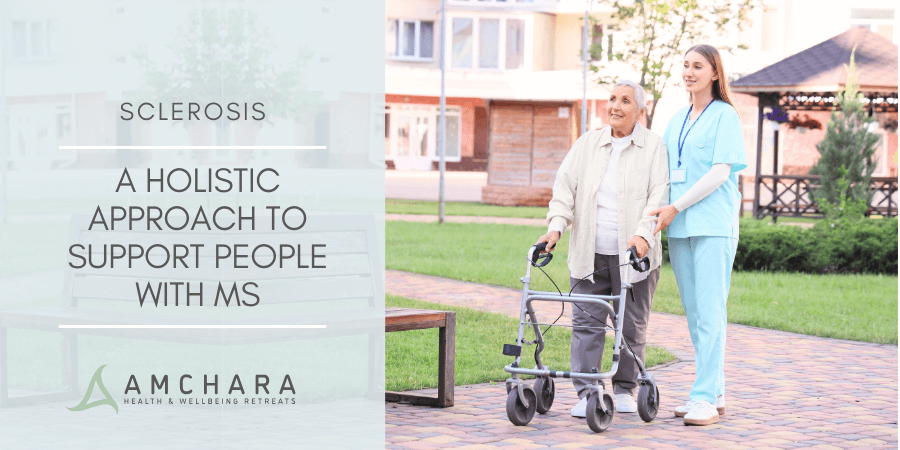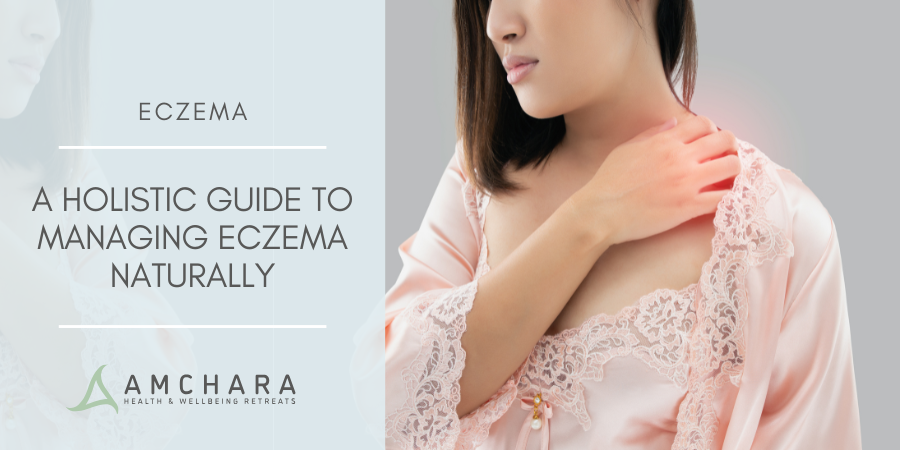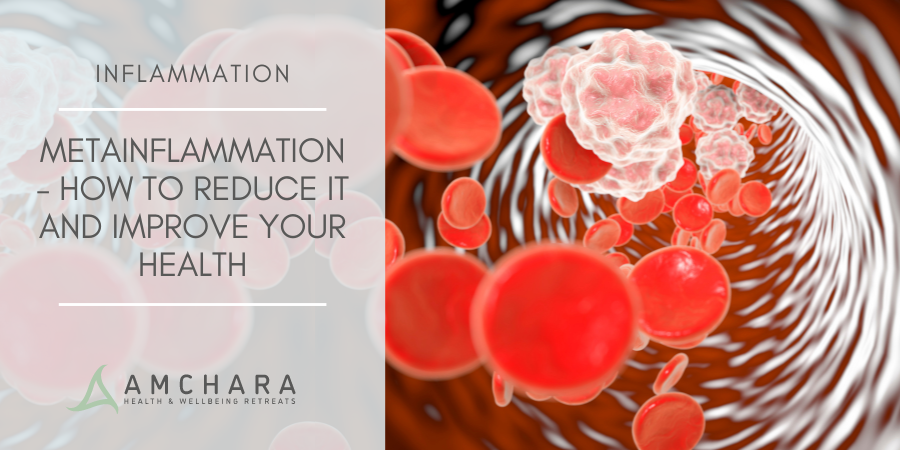Awareness | Causes | Prevention vs Treatment | Risk Factors | Prevention | Resources
October 2018 is Breast Cancer awareness month.
The aim of this campaign is to raise the profile of the disease and raise funds for research into its causes and treatment.
55,000 people are diagnosed with breast cancer every year in the UK.
Table of Contents
- Breast Cancer Awareness Month
- Breast cancer prevention versus treatment
- What causes breast cancer?
- The influence of genetics
- What about non-genetic breast cancer risk factors?
- What can I do to prevent breast cancer?
According to Breast Cancer Now, the aim of the campaign is that by 2050, ‘everyone who develops breast cancer will live, and live well’.
Research will concentrate on four major areas:
- Breast Cancer risk and prevention. The goal is that by 2025, 15% of breast cancer cases will be prevented, and by 2050, 30%. This will be achieved by looking at risk factors such as genetics and lifestyle.
- Early detection and diagnosis.
- Development of new treatments, usually drug based. Unfortunately these drugs usually come with an array of side effects.
- Secondary breast cancer, which occurs when cancer cells migrate from a primary cancer in the breast via the lymph system or the blood to form other tumours, often in the lungs, bones or liver.
The organisation funds 280 researchers at 31 institutions at a cost of £25 million.
Breast cancer prevention versus treatment
It’s the prevention aspect we’re going to look at in this article. Sadly, this is a relative newcomer to the cancer research table.
Traditionally the emphasis has been on drug therapy to treat cancer that has already developed with little emphasis on prevention. A cynic would say that this is because there’s no pharmaceutical money to be made from preventing cancer by adjustments to diet and lifestyle.
Breast Cancer Awareness month itself was originally launched in 1985 by pharmaceutical company Astra Zeneca, producer of several anti-cancer drugs, in conjunction with the American Cancer Society.
Recently, the importance of cancer prevention has started to become headline news.
However, many orthodox organisations continue to assert that research does not support the cancer-protective effects of dietary ad lifestyle choices.
This is due to a variety of reasons, not least because studies, especially on nutrition and cancer have long yielded mixed results.
This is not necessarily because food choices have no effect on our risk of developing cancer, but because it’s very hard to carry out a double bind placebo-controlled trial involving diet.
This is the type of trial accepted by the scientific community. For one thing, people can tell what they’re eating. No two diets can ever be completely identical. Studies need to be carried out over a long time – usually many years or even decades.
Another issue is there are many other variables which can confound study outcomes.
For example, some participants may have stressful lifestyles, others might use medical drugs, some may be more active than others. Added to this we are all different genetically with different predispositions.
Inferences can be taken from long term studies on diets traditionally eaten by different populations – for example the Mediterranean diet – but all sort of differences still exist between these precipitants. It’s no wonder results can be muddled.
Some studies have looked at large doses of specific nutrients, such as Vitamin C or specific antioxidants.
However, mega-doses of single nutrients don’t behave the same way as when they are bound in food along with phytochemicals, fibre and so on, which again can lead to frustratingly misleading results.
More Breast Cancer Stories:
- Alcohol and breast cancer risk
- Eat your way to healthy breasts [evidence based]
- Reducing breast cancer related fatigue with acupuncture
What causes breast cancer?
Oestrogen is a hormone which tells cells to divide, while progesterone slows down that divide.
We know oestrogen plays a role in the development of breast cancer.
Tumours may possess oestrogen receptors, in which case they are termed oestrogen-receptor positive tumours.
Around 70% of cases are oestrogen-receptor positive. Some breast cancers possess receptors of progesterone or growth hormone.
However, risk appears to be more complicated than simple blood levels of oestrogen.
One interesting study found better bone density was connected with twice the risk of developing breast cancer.
Rather than concluding that strong bones give you cancer, the researchers realised higher bone density reflects elevated oestrogen levels over a woman’s lifetime.
Oestrogen and progesterone balance
Most women who suffer from any type of hormonal imbalance during their childbearing years such as irregular periods, fibroids, PMT and so on will have some level of oestrogen dominance.
Many factors in modern life – not least of them stress – deplete the levels of progesterone in women’s bodies.
Oestrogen and progesterone have a see-saw like relationship in the body, so oestrogen levels tend to soar too high. It’s much more common that the other way around.
All oestrogen is not created equal
Oestrogen exists in the body in several different forms.
The three major types are estrone (E1), estradiol (E2) and estriol (E3). Estradiol is the strongest oestrogen, while estrone is weaker and tends to be produced after the menopause. High levels of estradiol are connected with higher risk of developing breast cancer.
The influence of genetics
It’s long been known certain genetic types are predisposed to developing cancers and breast cancer is no exception.
If you have a mother or sister who developed breast or ovarian cancer, particularly at a young age, you are up to three times more likely to develop the disease.
Recently scientists have discovered the BRCA gene, which is connected with repairing damaged DNA and preventing cells growing out of control, which is what happens in cancer.
This gene can mutate which means it doesn’t function correctly. These mutations can be inherited.
Around 5-10% cases of breast cancer cases involve mutations of the BRCA gene. Around 1 in 300 women carries the mutation, which puts them at a higher risk of developing the disease.
Being aware of your genetics and your individual susceptibility to developing breast cancer can go a long way in empowering you to pay special attention to potential risk factors and could help with early detection. Amchara offers a range of tests including genetic tests.
What about non-genetic risk factors?
Our inherited genetic tendencies interreact with non-genetic risk factors.
Let’s have a look at some of these now.
Oestrogen exposure
The risk of developing breast cancer is greater if a woman starts menstruating younger than age 15, or if she starts the menopause after age 55. The risk also appears to be higher in women who have used the contraceptive pill or combined HRT and reduced if a woman has had children. All these factors are connected with a woman’s exposure to oestrogen over her lifetime.
Breast density
Denser breasts, with proportionally less fatty tissue and more glandular tissue are reported to be significantly more likely to develop cancer.
Tumours in denser breasts are far less likely to show up on a mammogram. Thermal imaging techniques , which uses an infrared camera to measure temperature variations in breast tissue.
This technique is based on the principal that pre-cancerous tissue and developing breast cancer is characterised by a higher temperature than normal breast tissue.
It can be a useful adjunct to conventional mammograms, particularly for younger women with dense breasts.
Age
Breast cancer risk is highest in those aged 70 or older, although the risk jumps between age 30 and 40. The precise reason for this is not clear.
Inflammation
New research is also looking at the role of inflammation in the development of breast cancer. High levels of a substance called C-reactive protein, which serves as a measure of inflammation in the body were associated with an increase in the likelihood of breast cancer recurring.
What can you do to prevent breast cancer?
According to one review published in Pharmaceutical Research , 90-95% cancers are due to diet, lifestyle and environmental toxins. Breast cancer is no exception.
Let’s look at the top 8 of these now.
1. Watch your weight
This is a particular risk factor after the menopause. When a woman stops menstruating, her fat cells largely take over the job of producing oestrogen.
The more fat cells you have, the more oestrogen tends to be produced. Exercises alters oestrogen metabolism , resulting in a higher concentration of the types of oestrogens connected with lower breast cancer risk.
One study looked at how much weight women had gained since age 18 and found this was positively correlated with breast cancer.
Those who gained between 21 and 30 pounds were 40% more likely to develop the disease than those who had gained less than 21 pounds.
High insulin levels , which are connected with obesity and high sugar intake, are correlated with significantly increased risk of breast cancer, especially past the menopause. Insulin has been found to stimulate the growth of breast cells in tissue cultures.
2. Exercise
A good deal of research has discovered a link between exercise and reduced breast cancer risk.
One study found that as little as one hour of moderate pace walking per week cut the risk of breast cancer by 14% in postmenopausal women.
An hour of strenuous activity per day cut risk by 25%.
The Department of Health recommends at least 150 minutes per week of moderate intensity exercise such as cycling or brisk walking or 75 minutes per week of high intensity exercise such as running or a game of tennis. Strength exercises are also recommended on two or more days per week.
Interestingly, research suggests physical activity can reduce the influence of the mutated BRCA gene and encourage normal gene expression.
We may inherit characteristics from our parents, but science is now finding we have more influence over the expression of these genes than previously thought.
3. Alcohol
Even small amounts of alcohol appear to increase incidence of breast cancer.
This seems to be more pronounced in the case of oestrogen-receptor positive cancers, where even one drink per day in the case of postmenopausal women was found to increase risk by 9%.
4. Smoking
Smoking is associated with increased breast cancer risk of 16%, and by 9% for former smokers. Smoking appears to particularly affect premenopausal women.
5. Move
Or rather, sit less. A study by the American Cancer Society found women who spent more than 6 hours per day sitting had a 10% greater risk of developing breast cancer when compared to women who sat for less than 3 hours per day. Let that be motivation for you to get off the couch!
6. Stress
Stress has a massive negative impact on the immune system and can deplete progesterone levels by stealing its starting molecule to manufacture the stress hormone cortisol.
This often leads to elevated oestrogen levels. Because of this, stress would be expected to increase the risk of breast cancer.
However, results of studies have been mixed, largely because it’s difficult to measure stress over the long term. However, from what we know about the physiology of stress, a connection seems extremely likely.
7. Ditch the plastics
It’s not only good for the environment and marine life to avoid plastic.
Today’s world is chock-full of chemicals known as xenoestrogens which do a pretty good job of disrupting our hormones.
Such chemicals attach to our body’s oestrogen receptor sites where they mimic its effects and disrupt the balance between progesterone and oestrogen.
Xenoestrogens originate from all sorts of areas like industry and agriculture, but a huge culprit is plastics.
Bisphenol A (BPA), for example, is found in most plastic and used to line food and drink cans.
It easily leaches from the plastic into the food or liquid, particularly if it’s heated in a microwave or if it’s a fatty food like cheese. Choose BPA-free water bottles and store food in glass containers wherever possible.
8. Diet and nutrition
Antioxidants such as Beta Carotene and vitamin E appear to help to protect against breast cancer.
One study found an inverse relationship between blood levels of vitamin D and the disease.
Research has also noted a relationship between low intake omega-3 fatty acids, found in oily fish such as salmon and seed oils such as flaxseed oil, and cancer.
This may be connected with the anti-inflammatory properties of these oils.
Research carried out with regard to the Mediterranean diet found that breast cancer incidence was significantly reduced in women eating a diet along these lines.
A high consumption of non-starchy vegetables was found in a recent review to be connected with protection from breast cancer.
All the above points to the importance of a healthy, largely plant-based diet, with healthy fats, wild-caught oily fish and a moderate amount of organic meat.
At Amchara we offer personalised dietary and lifestyle reviews in consultation with a naturopath, alongside assessment of genetic risk and functional tests to determine your hormone levels and how well your detoxification systems are working.
Written by: Cathy Robinson BScDipNutMed
Related Breast Cancer Stories:
- Alcohol and breast cancer risk
- Eat your way to healthy breasts [evidence based]
- Breast cancer and alternative breast cancer treatments
- Reducing breast cancer related fatigue with acupuncture
Helpful Links:
Breast cancer in women
https://www.nhs.uk/conditions/breast-cancer/
Breast Cancer Care: Breast cancer support charity
https://www.breastcancercare.org.uk/
Breast Cancer Now | UK Breast Cancer Research Charity
https://breastcancernow.org/
Breast cancer | Cancer Research UK
https://www.cancerresearchuk.org/about-cancer/breast-cancer
Types of breast cancer – Information and support
https://www.macmillan.org.uk/information-and-support
